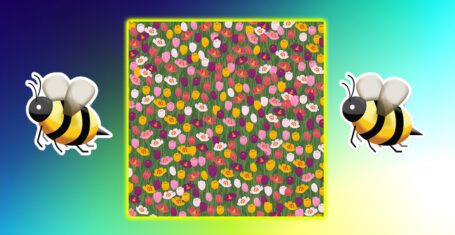
Review: Conversations With Myself
A curious play with a pervasive aura of threat and mania – but at the same time engaging on a very human level.
‘Conversations With Myself’ by the Cambridge Mask Collective is an impactful piece of experimental theatre. The story, if it can be called that, follows Nicky Payne, a Wall Street New Yorker who has just transitioned from male Nicholas to female Nicky and, as a result of the largely negative reaction of the people in her life, is in the midst of a deep depression. The play swings from the comedic to the tragic with offshoots through both the disturbing and the downright bizarre. It is a collation of radically different, but surprisingly complementary, genres: movement pieces, physical theatre, monologues and, the most unique method, masks.
The play opens with a movement piece, Nicky seemingly haunted by four…demons? Spirits? Whatever they may be, their mouthless masks with only small slits revealing the whites of their eyes produce a much more disturbing visual than I had expected. The scene shifts and the masks change to half-face to embrace a vaudeville style performance. However, even though their mouths are open in laughter, they seem more like chasms than expressions of joy and the frenzied dances seem to resemble some kind of demonic possession. The choral movement, which exhibits a beautiful comprehension of unity and pace, combined with the creepy masks, achieves an edge of brutality whcih is maintained throughout almost all of the play.

Photo: Helena Fox.
The masks used are indeed central to why this piece works so well – clearly to be expected from the Cambridge Mask Collective. They are almost entirely featureless, not the comedy/tragedy Greek theatre trope that might immediately come to mind. While seemingly simple, it is the subtler features that give these masks pride of place in the show: a protruding nose here, a rough, unfinished exterior there, each specially designed by Tim Otto. They are both incredibly expressive and utterly blank at the same time and completely transform the narrative into one of ever-present threat and dissociation.
It is rather incredible that despite not being able to see their faces – when in character only their mouths are uncovered – the five actor/creators manage to embody captivating characters. The monologues were often lengthy, but my attention never wavered: I was completely captivated, a testament, surely, to both the skill of the actors and the basis created by Leo Benedict’s script and he and Odette Baber Straw’s direction.

Photo: Helena Fox.
The characters are, perhaps, often stereotypical. The “sort-of” Jewish grandmother Deborah with crazy hair and a grating accent; the Italian-American Gino who loves liquor and girls; the prim and proper Pamela to whom ‘family is everything’. However, their predictability somehow serves to turn the focus that much more on Nicky. She is the only one who removes her mask, who we see for whom she really is; the others are all just manifestations, ‘figments of her imagination’, albeit entertaining ones.
As a whole piece, the only thing that was lacking for me was a final impact. The themes the play deals with are very real and, potentially, very powerful- and yet I wasn’t sure what I was meant to be feeling. Sympathy for Nicky, of course; disgust at the reaction of some of those around her; fear at the creatures that seem to enter her life, but there was a connective thread missing. I felt there was a lack of parallel between Nicky’s pain and the time spent exploring other’s stories. Innovative and experimental as it is, perhaps something more tangible has been lost throughout the creation period. Nonetheless, these are very personal comments – I am sure anyone who sees the piece will take away their own interpretation – part of the beauty of keeping the performers so anonymous.
Regardless of the overarching message you take away from the play, what can be guaranteed is an introduction to a new form of theatre that artfully combines an engrossing script with fluid direction and leaves you with an undeniable sense of admiration for the talents of the ensemble cast.
4.5 stars.
Header image courtesy of Helena Fox.









































